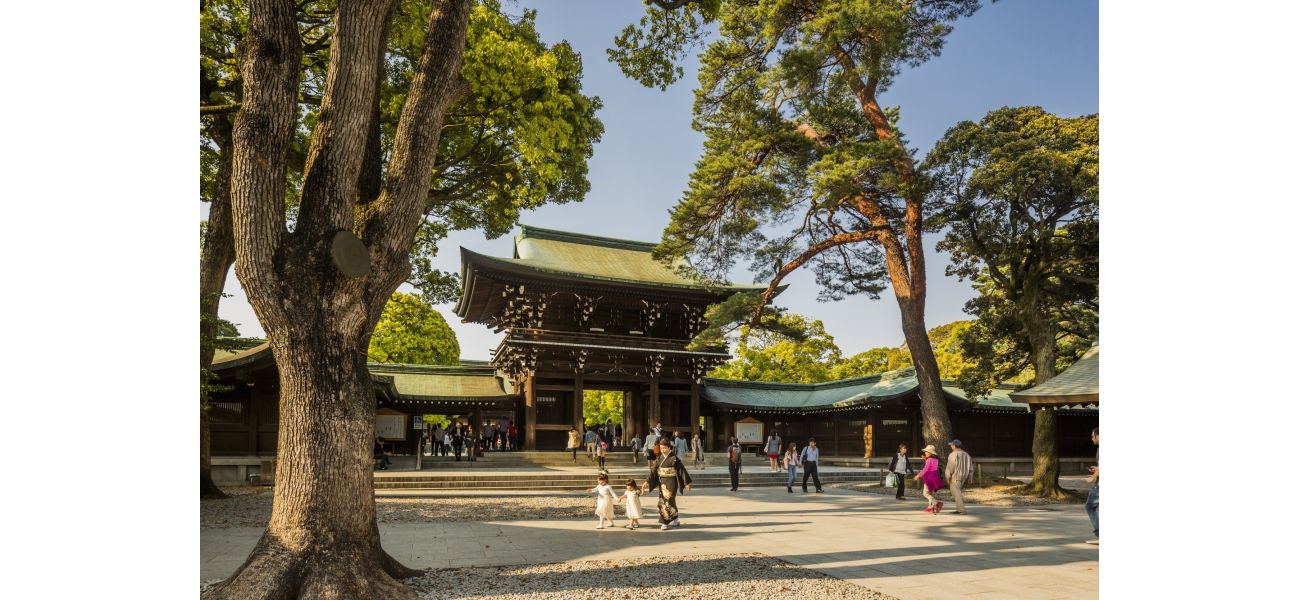A visitor was apprehended for vandalizing a well-known shrine in Tokyo.
This is one of many events that occurred this year.
November 16th 2024.

The Meiji Jingu shrine, located in the bustling city of Tokyo, is a place of great importance and reverence for the Japanese people. It serves as a tribute to the late Emperor Meiji and his beloved wife, Empress Shoken. However, this holy sanctuary was recently marred by an unfortunate incident involving an American tourist.
The tourist in question, a man named Steve Hayes, was arrested for defacing the sacred wooden gate of the shrine. It was reported that he had used his fingernail to etch five letters onto the gate, causing damage to the property. This incident was captured on CCTV, leading the authorities straight to the culprit.
Steve, who had been on vacation in Japan with his family, was shocked and taken aback when the police arrived at his hotel room to arrest him. He was charged with damaging property and taken into custody. The Meiji Jingu shrine, built in 1920, is not only a symbol of Japan's rich history and culture, but also a place where the spirits of the Emperor and Empress are honored.
This was not the first case of vandalism at a shrine in Tokyo this week. Just a few days prior, the Yasukuni Shrine, which commemorates the country's fallen soldiers, was defaced with the kanji character for "death". This has caused great concern among the locals, as it is seen as a desecration of their sacred place of worship.
Unfortunately, this is not an isolated incident. In the past, there have been other instances of vandalism and misconduct by tourists in Japan. In June, the word "toilet" was spray-painted in red on the walls of the Yasukuni Shrine, and the culprit was charged with property damage and desecration of a place of worship. The police are also searching for two other suspects, both of whom are Chinese nationals.
The Torii gate, which stands at the entrance of the Meiji shrine, is a significant symbol in the Shinto religion. It represents the boundary between the physical world and the spiritual realm. People often stop to pay their respects by bowing in front of the gate, rather than defacing it.
This is not the first time that tourists have caused a stir in Japan. In October, a fitness influencer from Chile sparked controversy after she was filmed doing pull-ups on a torii gate at another shrine. Such incidents have raised concerns about the impact of over-tourism on the country.
While tourism brings in a significant amount of money to Japan's economy, it has also led to instances of vandalism, public drunkenness, and overcrowding. In an effort to balance the influx of visitors with the concerns of the locals, some measures have been taken. For example, a small town near Mount Fuji has erected a barrier to block the view of the sacred mountain, which had become a popular spot for social media photos. Mountain rangers have also implemented trail fees and entry limits to control the number of visitors.
In addition, the authorities in Tokyo's Shibuya district have taken steps to prevent chaos on Halloween by covering the iconic statue of the Akita dog Hachiko and banning street drinking. These measures may seem extreme, but they are necessary to preserve the sanctity of these sacred places and maintain the delicate balance between tourism and cultural etiquette.
The tourist in question, a man named Steve Hayes, was arrested for defacing the sacred wooden gate of the shrine. It was reported that he had used his fingernail to etch five letters onto the gate, causing damage to the property. This incident was captured on CCTV, leading the authorities straight to the culprit.
Steve, who had been on vacation in Japan with his family, was shocked and taken aback when the police arrived at his hotel room to arrest him. He was charged with damaging property and taken into custody. The Meiji Jingu shrine, built in 1920, is not only a symbol of Japan's rich history and culture, but also a place where the spirits of the Emperor and Empress are honored.
This was not the first case of vandalism at a shrine in Tokyo this week. Just a few days prior, the Yasukuni Shrine, which commemorates the country's fallen soldiers, was defaced with the kanji character for "death". This has caused great concern among the locals, as it is seen as a desecration of their sacred place of worship.
Unfortunately, this is not an isolated incident. In the past, there have been other instances of vandalism and misconduct by tourists in Japan. In June, the word "toilet" was spray-painted in red on the walls of the Yasukuni Shrine, and the culprit was charged with property damage and desecration of a place of worship. The police are also searching for two other suspects, both of whom are Chinese nationals.
The Torii gate, which stands at the entrance of the Meiji shrine, is a significant symbol in the Shinto religion. It represents the boundary between the physical world and the spiritual realm. People often stop to pay their respects by bowing in front of the gate, rather than defacing it.
This is not the first time that tourists have caused a stir in Japan. In October, a fitness influencer from Chile sparked controversy after she was filmed doing pull-ups on a torii gate at another shrine. Such incidents have raised concerns about the impact of over-tourism on the country.
While tourism brings in a significant amount of money to Japan's economy, it has also led to instances of vandalism, public drunkenness, and overcrowding. In an effort to balance the influx of visitors with the concerns of the locals, some measures have been taken. For example, a small town near Mount Fuji has erected a barrier to block the view of the sacred mountain, which had become a popular spot for social media photos. Mountain rangers have also implemented trail fees and entry limits to control the number of visitors.
In addition, the authorities in Tokyo's Shibuya district have taken steps to prevent chaos on Halloween by covering the iconic statue of the Akita dog Hachiko and banning street drinking. These measures may seem extreme, but they are necessary to preserve the sanctity of these sacred places and maintain the delicate balance between tourism and cultural etiquette.
[This article has been trending online recently and has been generated with AI. Your feed is customized.]
[Generative AI is experimental.]
0
0
Submit Comment





